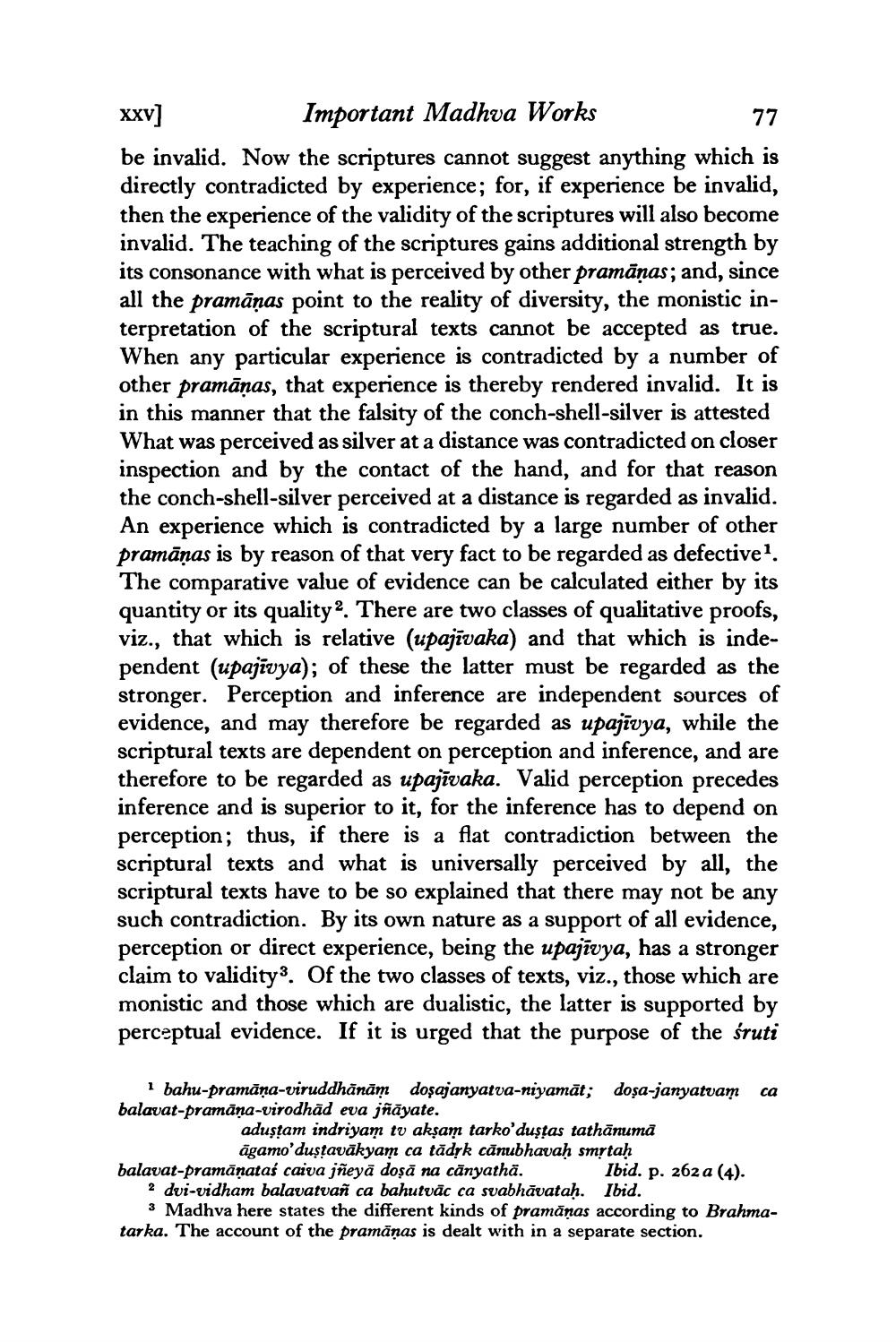________________
XXV Important Madhva Works
77 be invalid. Now the scriptures cannot suggest anything which is directly contradicted by experience; for, if experience be invalid, then the experience of the validity of the scriptures will also become invalid. The teaching of the scriptures gains additional strength by its consonance with what is perceived by other pramānas; and, since all the pramāṇas point to the reality of diversity, the monistic interpretation of the scriptural texts cannot be accepted as true. When any particular experience is contradicted by a number of other pramānas, that experience is thereby rendered invalid. It is in this manner that the falsity of the conch-shell-silver is attested What was perceived as silver at a distance was contradicted on closer inspection and by the contact of the hand, and for that reason the conch-shell-silver perceived at a distance is regarded as invalid. An experience which is contradicted by a large number of other pramāņas is by reason of that very fact to be regarded as defectivel. The comparative value of evidence can be calculated either by its quantity or its quality. There are two classes of qualitative proofs, viz., that which is relative (upajīvaka) and that which is independent (upajīvya); of these the latter must be regarded as the stronger. Perception and inference are independent sources of evidence, and may therefore be regarded as upajīvya, while the scriptural texts are dependent on perception and inference, and are therefore to be regarded as upajīvaka. Valid perception precedes inference and is superior to it, for the inference has to depend on perception; thus, if there is a flat contradiction between the scriptural texts and what is universally perceived by all, the scriptural texts have to be so explained that there may not be any such contradiction. By its own nature as a support of all evidence, perception or direct experience, being the upajīvya, has a stronger claim to validity. Of the two classes of texts, viz., those which are monistic and those which are dualistic, the latter is supported by perceptual evidence. If it is urged that the purpose of the śruti
i bahu-pramāņa-viruddhānām dosajanyatva-niyamāt; doşa-janyatvam ca balavat-pramāna-virodhād eva jñāyate.
adustam indriyam tu akşam tarko'dustas tathānumā
āgamo'duştavākyam ca tādık cānubhavaḥ smrtah balavat-pramānataś caiva jñeyā doşā na cānyatha.
Ibid. p. 262 a (4). 2 dvi-vidham balavatvañ ca bahutvāc ca suabhāvatah. Ibid.
3 Madhva here states the different kinds of pramānas according to Brahmatarka. The account of the pramānas is dealt with in a separate section.




